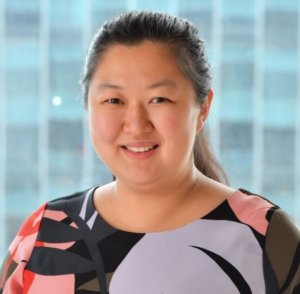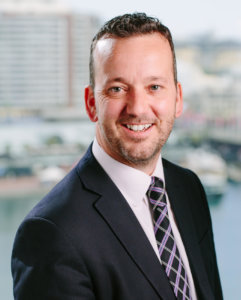Get full access
To view the full article and get unlimited access to InsuranceAsia News's exclusive insight across 5,000+ articles
Already a Subscriber? Please Login
Targeted policy measures to address structural drivers of cat losses, better data collection, including individual exposures, and modelling are needed to combat climate risks.
John Zhu, chief economist Asia Pacific Swiss Re, opening the panel “De-risking climate change and advancing sustainability: turning promises into action”, warned of the growing burden of nat cat losses that are increasing by 5-7% annually, putting pressure on economies.
In Asia, climate risk is mixed with economic factors and is more noticeable because of factors like a high concentration of property exposed to various risks like high temperature, wind and flood, the speed of urbanisation and the lack of infrastructural elements like efficient drainage systems, Zhu said.
These losses “put significant strain on both private and public sector, requiring actions like reconstruction which is becoming more expensive because of inflation.
However, building resilience against emerging risks like flood is possible, he said.
“The natural catastrophe protection gap is rising. So not only natural catastrophes are causing more and more damages, but a lot of that [damage] is simply uninsured, and many regions of the world still lack the adequate insurance protection, including many countries in emerging Asian economies,” he said.
“There are long-term structural factors like urbanisation… which act as structural long-term driver of growth and nat cat risk”.
Christopher Hui, secretary of financial services and the treasury of Hong Kong, shared that the local market is trying to achieve net-zero targets, looking at specific sectors that contribute to carbon emissions.
“We are a service economy and don’t have much manufacturing, basically the largest contributors are power generation (more than 60%) and transport,” he said.
He referred to specific measures such as discontinuing coal-based power generation and increasing the use of renewable energy in the energy mix to 10% by 2035.
So these are the specific measures in terms of using a regulatory or policy approach to require the certain segments of the economy to be carbon neutral.
He also explained that starting this week Hong Kong will be adopting a new arrangement with the stock market open during typhoons in order to make the market more resilient and ease work for foreign investors.
Lubomir Varbanov, managing director and head of public sector solutions APAC and multilateral development banks at Swiss Re, highlighted the need for active adaptation and risk management besides mitigation that the public discourse has been focused on.
“Insurers and reinsurers can take more risk on certain elements whether it’s political or supply chain disruption risks to provide more comfort to investors… specifically lowering the cost of capital, which in turn allows some of these adaptation projects which are so critically needed to go ahead,” Varbanov said.
Eric Hui, CEO of Zurich Hong Kong, pointed to the importance of having a sustainable portfolio for insurers to manage losses and affordable charges for customers.
Talking about modelling, Zurich’s Hui brought up the challenge of adapting complicated data to a model.
“In Asia, we don’t have a standard geocodes for properties or assets…and the problem is we can’t really contribute our data,” he said.
He explained that since the government has a common spatial data infrastructure agreed on, Zurich is trying to relate that into its claims data.

“People can only see and feel the rain and flooding. But do they really understand what the future looks like? If we don‘t accelerate adaptation, we‘re going to see a worsening trend of natural disasters and climate-related losses.“
Chelsea Jiang, AXA
Chelsea Jiang, chief technical and innovation officer, general insurance, Greater China at Axa Hong Kong and Macau, said that while an understanding of broader geographies to climate change has been developed, understanding of individual clients’ exposures to climate risk is very low.
“People can only see and feel the rain and flooding. But do they really understand what the future looks like? If we don‘t accelerate adaptation, we‘re going to see a worsening trend of natural disasters and climate-related losses,“ she said.
Guy Carpenter’s Jeremy Waite discusses how index-based products can fill the protection gap left by indemnity insurance from deductibles, excluded perils, scarce capacity and contingent business interruption.
Heightened nat cat losses, especially increased secondary perils, a harder market with limited new capacity availability and changing reinsurance structures with programs moving away from aggregate losses has pushed cedents to look for alternative risk transfer solutions – including parametric products.
Index-based products can complement reinsurers’ capital protection platforms and provide quicker access to funds compared to traditional cover, said Jeremy Waite, head of catastrophe advisory group, Asia Pacific, Guy Carpenter.
“Parametric insurance can fill the protection gap left by indemnity insurance from deductibles, excluded perils, scarce capacity and contingent business interruption,” said Waite.
Indeed, it is important to note that parametric insurance is not designed to replace traditional insurance, but to complement it in helping to cover financial losses or uninsurable perils.
The parametric market is growing rapidly, with more entities offering parametric products or partnering with managing general agents (MGAs) or managing general underwriters (MGUs) that offer specialised expertise and capacity.
Awareness of parametric insurance is also increasing in the region due to growing awareness of risk, new market entrants, enhanced availability of data and models, and the advantage of quick fund disbursement in disaster areas.

“Parametric insurance can fill the protection gap left by indemnity insurance from deductibles, excluded perils, scarce capacity and contingent business interruption.”
Jeremy Waite, Guy Carpenter
“While there is always some basis risk due to potential differences in triggers and amounts, there are ways to minimise this,” he said.
“For instance, GC StormGrid leverages real-time data from meteorological agencies to develop parametric tropical cyclone covers.
“By employing a grid of cells instead of a single geographic domain, it effectively reduces basis risk and enhances accuracy by calibrating recoveries closely to client exposure distribution. Our internal testing has demonstrated accuracy improvements of approximately 40-50%. Additionally, parametric triggers in catastrophe bonds can be structured to minimise basis risk and complement reinsurers’ retrocessional programs,” he explained.
Parametric insurance, however, faces challenges due to limited credible data and models in certain regions and for some perils, making it difficult to structure deals. It takes time to develop models and data to measure basis risk precisely.
“Despite the added complexity compared to traditional coverage, parametric insurance provides swift payments and access to non-traditional reinsurers’ capacity. While it is ideal for public sector needs, ensuring relevant coverage and effective triggers across regions and perils remains a challenge,” he said.
The reinsurance market experienced a significant reset on January 1, 2023, due to the aftermath of Hurricane Ian in Q3 2022. The reset was driven by record levels of natural catastrophe losses in 2022, resulting in higher retentions and pricing for traditional reinsurance cover.
To manage the increased cost of reinsurance capital, insurers are assessing risks and strategies for specific perils.
“We are seeing the growth of the ILS market in Hong Kong and Singapore as reinsurers seek to diversify their protection needs. Capacity is increasing in response to the rising demand, particularly as the indemnity markets are currently at a peak,” Waite said.
The Chinese government has stated its intention to promote a catastrophe insurance system that will run along market principles, as regulators seek to improve the country’s response to natural catastrophes, which have caused direct economic losses of CNY93.2 billion (US$12.8 billion) in 1H 2024.
Taiping Re is actively participating in the construction of China’s catastrophe insurance system through its mainland subsidiary Taiping Re (China), said Sheldon Yu, chief executive officer of Taiping Re.
“Taiping Re continues to expand the coverage of catastrophe insurance business. We use the Chinese Catastrophe Pool as a channel, combines government needs and regional disaster conditions, and provides technical support to seek new business opportunities,” Yu said.
The reinsurer is also strengthening its research on catastrophic risks.
“In recent years, we have participated in Chinese Catastrophe Pool projects and some municipal projects and participated in risk assessment and product design. As we continue to accumulate project experience, we will provide more catastrophe reinsurance protection within our risk appetite,” he added.
Taiping Re will also promote the innovation of catastrophe insurance products and services. It fully considers regional differences and combines actuarial quantification assistance to our catastrophe insurance products.
The chief executive said: “Our focus is also on providing risk-reduction services. Since 2019, we have cooperated with professional institutions to develop and upgrade the natural disaster analysis platform along the ‘the Belt and Road’, providing professional risk management services for enterprises that seek to expand their business overseas.”
“In 2023, we participated in five government catastrophe projects, including Chinese Catastrophe Pool projects, and provided underwriting capacity support for earthquake index reinsurance treaties in two cities in Yunnan Province. Taiping Re is also involved deeply in price estimation and product design.
“Going forward, the scope and depth of our participation in catastrophe insurance will continue to improve,” he added.
Taiping Re is also conducting research on Hong Kong flood catastrophe risk by cooperating with universities and scientific research institutions.
“Our goal is to improve the pricing capability on catastrophe insurance and provide support for risk reduction services and product innovation in the Greater Bay Area,” according to Yu.

“Hong Kong financial institutions and investors can provide necessary capital support for the mainland insurance market and enhance underwriting capacity by investing in mainland insurance companies or insurance products.”
Sheldon Yu, Taiping Re
Industry collaboration
The insurance and reinsurance industries in China attach great importance to risk reduction.
Reinsurers can cooperate with insurance companies and professional organisations to provide meteorological disaster warnings for typhoons, floods, and other disasters, helping insured companies identify potential risks and reduce expected losses.
Taiping Re (China) actively participates in government-promoted catastrophic insurance projects to prevent catastrophic risks, safeguard people’s livelihoods, and reduce the pressure on the government to prevent and mitigate disasters. The demand for catastrophic insurance protection in various regions is also constantly increasing.
HK’s role in cat risk mitigation
As an international financial centre, Hong Kong has strong capital strength and abundant financial resources.
“Hong Kong financial institutions and investors can provide necessary capital support for the mainland insurance market and enhance underwriting capacity by investing in mainland insurance companies or insurance products,” Yu said.
In recent years, some domestic insurance institutions have issued catastrophe bonds in Hong Kong to protect against catastrophe risks in the mainland, which is also a beneficial attempt to deal with natural disaster risks.
Yu said: “The Hong Kong insurance market has strong product innovation capability. By introducing Hong Kong or international insurance products through channels in the city, we can learn from product and risk management concepts to develop catastrophe insurance products that meet the needs of the mainland market.”
Reinsurance is an important means to disperse and transfer insurance risks. As one of the international reinsurance centres, Hong Kong can provide reinsurance support to the mainland insurance industry, Yu added.
The Malaysian reinsurer’s president and CEO Ahmad Noor Azhari lays out the regional insurance landscape and charts the carrier’s strategic ambitions in an exclusive chat with IAN.
Can you provide an overview of the current state of the reinsurance market in South-East Asia? What are the key trends and developments you’ve observed in recent years?
The recent few years have been relatively quiet in terms of market-wide headline insured losses for all the individual countries in the region. Nonetheless, the markets were not spared from the (re)insurance market hardening globally in the last two years. Though the extent of price hikes varied from country to country and from client to client, some were more impacted than the other. The market globally has begun to soften since the beginning of the year.
Some of the observations on the key trends and developments within the region include:
Underwriting practices are increasingly incorporating climate change and sustainability considerations in risk selection and portfolio management. The adoption rates vary across countries, largely influenced by the net zero goals set by the local regulators.
In Cambodia, new regulations have been introduced for lead and follow markets, specifically addressing capacity limitations which favours companies with a higher credit rating.
There is a notable trend in government-related construction projects, particularly those involving flood mitigation, where flood sub-limits are being imposed. Traditionally, construction projects in Malaysia did not have sub-limits for flooding. However, due to the nature and duration of these projects, the introduction of sub-limits is welcomed by insurers and reinsurers as it allows for better aggregate management.

“We will continue to play a positive role in support of green energy via the ASEAN Renewable Energy Pool which is focused on solar and onshore wind operational power plants.”
Ahmad Noor Azhari, Malaysian Re
How are climate change and the growing frequency/severity of natural disasters affecting the reinsurance market in the region?
On the buyers’ side, we are seeing greater interest and usage of cat models from established vendors like AIR, RMS to quantify the company’s nat cat exposure. Certain more sophisticated clients have even gone to the extent of mapping their individual policy level nat cat exposure data and incorporating nat cat accumulation exposure into their underwriting and risk-taking. In general, clients are buying more cat covers.
On the sellers’ side, reinsurers are seeking more granular exposure data from clients instead of zonal aggregate SI and adjusting their risk pricing accordingly.
Reinsurers may also reduce their exposure in high-risk areas, imposing stricter terms and conditions or even exclude certain types of risks, based on the data received from the client.
Additionally, there is a growing emphasis on ESG factors by reinsurers when making decisions by evaluating the sustainability practices of the company.
Looking ahead, what are the key priorities and focus areas for Malaysian Re in South-East Asia?
ESG is one of the areas of focus for Malaysian Re. We will continue to play a positive role in support of green energy via the ASEAN Renewable Energy Pool which is focused on solar and onshore wind operational power plants.
As a whole, we look forward to expanding our presence in the region and becoming a prominent player in the South-East Asia, not merely as a transactional capacity provider but rather a collaborative partner for the long term. We will continue to cultivate strategic and lasting relationships with our partners/clients across the region as well as work closely with the national reinsurers in the region for the betterment of the industry.
Malaysia, being our home market, will always be close to our hearts. It is our core and our backbone. With all the signs suggesting the market is firmly back in the right direction following the market corrections we have undertaken since the megaflood back in 2021, we can now look towards further to strengthen our position in the market. This includes enhancing our technical capabilities to better serve the growing needs of the market which include cyber, health and credit etc., as well as working closely with the regulators on market schemes and product innovations to close the protection gap for the benefit of all Malaysians, in particular the under-served segment.
As we chart our growth moving forward, our aim is to expand from being the national reinsurer for Malaysia to becoming a reinsurance partner of choice for our South-East Asia clients, an ASEAN reinsurer for ASEAN.
HSBC Life’s Daisy Tsang tells InsuranceAsia News how different initiatives can help regional businesses attract, educate and retain top talent, especially amongst younger employees.
Attracting younger members of the workforce to the insurance sector requires a holistic proposition that covers the opportunity to work for a vibrant, growing industry while also enjoying rounded benefits that enable them to grow as individuals, according to HSBC Life.
One of the challenges in the dynamic and competitive insurance sector in Asia Pacific, particularly Hong Kong, is the high demand for skilled professionals, Daisy Tsang, HSBC Life Hong Kong CEO, told InsuranceAsia News.
HSBC Life believes that a focus on attracting, developing, and retaining top talent is a critical component of its strategy, she said.
“By offering a competitive reward package, career development opportunities, and a positive work culture that recognises both the contributions of individuals and the importance of a collaborative team environment, we can compete to not only attract, but also motivate and retain the best talent in the market,” said Tsang.
Another positive factor for the insurer is the region’s diverse talent pool that allows it to bring together a variety of perspectives and experiences, fostering innovation and growth, she said.
Tapping into the Gen Z market
“We aim to attract top talent by positioning ourselves as an employer of choice in the industry,” Tsang said. “This means offering employee benefits such as quality time-off, medical insurance with a flexible preventative wellness spending account, and access to sports and recreational activities at nominal membership fees.”
To tap into the Gen Z market, the insurer has also launched a graduate programme and organises an annual insurance innovation competition to attract final-year students or recent graduates.
Another initiative that helps the firm to expand its talent network is its employee referral programme. “We also believe ambitious and talented individuals will be more inclined to work with like-minded individuals, so having engaged and tenured employees helping us find the right people in the market through their connections can help our talent pool to organically grow. We therefore have a lucrative employee referral programme that rewards our employees who help us to identify this talent,” Tsang explained.

“We are noticing that employees, particularly younger ones, are increasingly valuing work-life balance, flexibility, and growth opportunities. To retain our talent, we are committed to listening to feedback from our employees, and actively addressing these needs and creating an environment where our employees feel fully valued and engaged.”
Daisy Tsang, HSBC Life
Employee growth
Among the initiatives that support employee development are the HSBC Life Training Academy, and HSBC’s talent development platforms such as HSBC University, learning platform Degreed and an AI-based Talent Marketplace that matches employees to projects and short-term assignments based on their skills, experiences and aspirations.
“Employees will be able to delve into new business areas or markets, acquire new skills, increase visibility, and establish a wider network in the region to achieve career aspirations and development plans, while project owners will be able to quickly find people with the right skills and experiences to help them get work done – a win-win,” Tsang said.
“We take pride in providing career development opportunities for our people beyond HSBC Life in Hong Kong and Macau. We have colleagues who have developed their careers in our group companies across the region”.
Talent retention
To retain talent, HSBC Life intends to continue providing a supportive and inclusive work environment, competitive compensation and benefits, and a multitude of opportunities for career progression given the size of the insurance company as well as the wider organisation. Other instruments include a myriad of staff engagement events, such as lunch-and-learn training sessions, festival celebrations, community work and regular exchange sessions between colleagues and management that encourage a speak-up culture fostering communication and collaboration.
“We are noticing that employees, particularly younger ones, are increasingly valuing work-life balance, flexibility, and growth opportunities. To retain our talent, we are committed to listening to feedback from our employees, and actively addressing these needs and creating an environment where our employees feel fully valued and engaged,” she said.